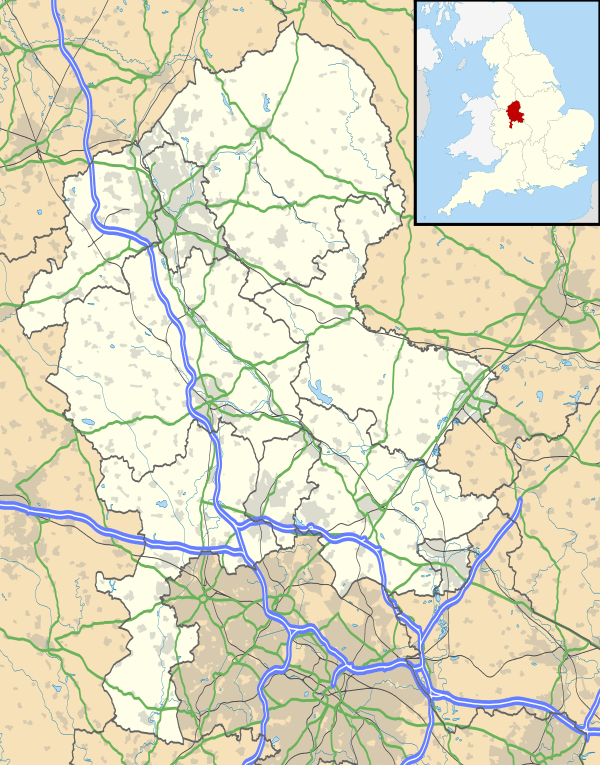Leycett
Coordinates: 53°01′02″N 2°18′23″W / 53.0173°N 2.3063°W
Leycett was a small mining village in Staffordshire in the Borough of Newcastle-under-Lyme which was built in the late eighteen sixties to accommodate the miners and their families. Population details as taken at the 2011 census can be found under Madeley with the name Leycett meaning 'the clearing in the woods'
Mining in Leycett was first mentioned back in Roman times and continued into the nineteenth century which is when in 1801, a Leasehold agreement was taken out for thirty three years to mine coal on land at Leycett between John the First Lord Crewe, Walter Sneyd of Keele, Thomas Breek of Keele and James Breek of Newcastle. By 1834 local industrialist Thomas Firmstone had taken over the lease and in 1838 constructed a three and half mile tramline from the colliery to link up with the mainline at Madeley Station to help transport his coal all over the country.
Later on Leycett was served by a railway station which was opened by the North Staffordshire Railway on 28 June 1880 for passengers. At its peak the village as well as having a colliery also had a miners institute, a church, a village shop with off-licence, a Post Office, a Butchers, the railway station as mentioned above, a doctors, a school and a recreation ground built by the miners which had a cricket and football pitch, and later tennis courts and a bowling green.
The main part of village by the mid-sixties had been knocked down after the colliery closed down in 1957. The only buildings left standing today are the old school and School House, the railway cottages, the Station House, part of the wooden station now used as a garage, the row of houses at Park Terrace and a few cottages and farms. Where the main bulk of the Leycett community once lived in the terraced houses (Top Street, Middle Street and Bottom Street) has been completely demolished and now looks similar to an orchard, although the trees there are not fruit trees.
Where once stood the miners welfare institute, now stands a Portakabin office for the recycling yard. The railway cutting and bridge adjacent to the institute are now part of the topography of the recycling yard, the former being used for landfill and the latter demolished to accomplish this.
The cricket club which has been around since about 1875 continues to this day playing in one of the top leagues in the country, unfortunately the football pitch, tennis court and bowling green have long since gone.
The village hosted the Hollywood music festival in 1970 which attracted 45,000 people over the weekend with acts such as Black Sabbath, Mungo Jerry and Grateful Dead. This was the first rock concert to be held in the northern part of Britain. The concert should have been aired on the BBC but the story goes that the film crew were spiked with LSD by one of the bands.
